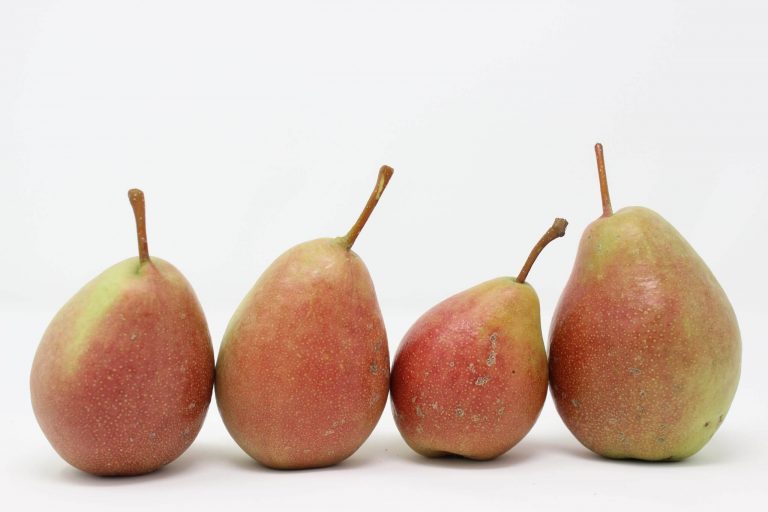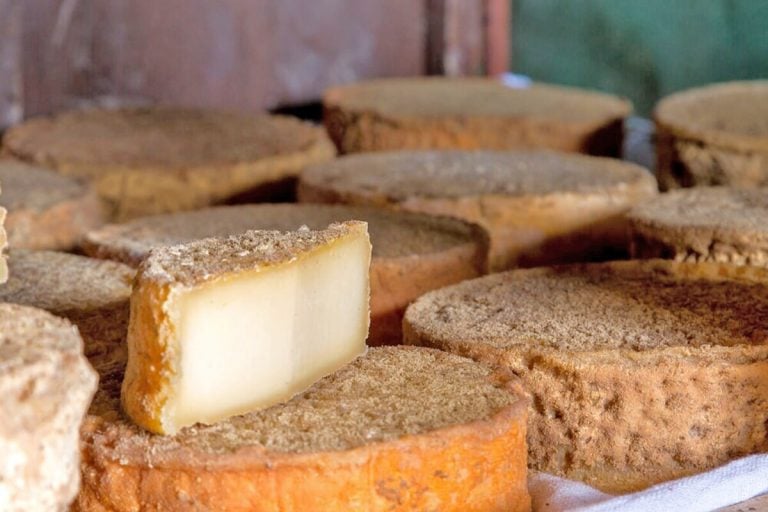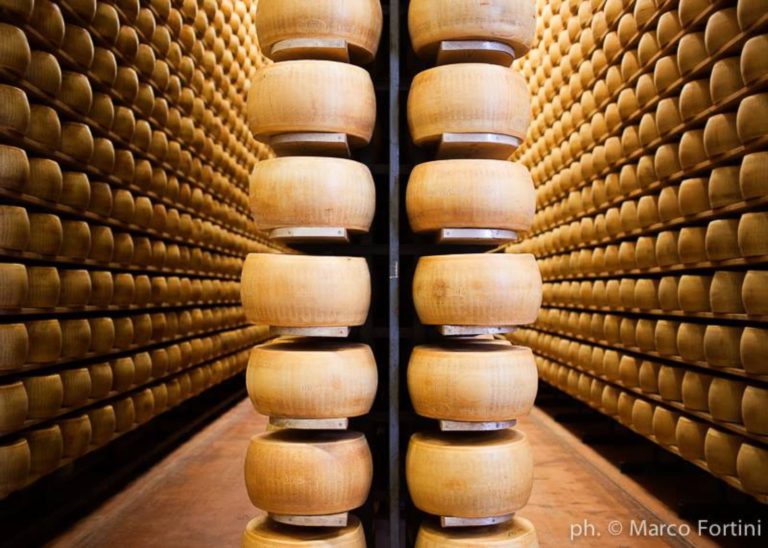You can enjoy them as an aperitivo with a good glass of wine, or at the end of a meal served with honey and jams. You can also use them to prepare tasty pasta dishes or serve them as main courses. It is one of the most versatile foods in the kitchen because it lends itself to many interpretations, both sweet and savory. Of course we’re talking about cheeses, particularly the traditional cheeses of Emilia-Romagna.
Guardians of an ancient history often rooted in the Middle Ages, the cheeses of our region are the expression of the mastery of cheesemakers, who have refined their production techniques for centuries with the aim of achieving excellence.
There are six PDOs in Emilia-Romagna, but the traditional products abounding in the stores and reigning on the dinner tables are many more. Follow us to discover their unmistakable taste.
Provolone Valpadana PDO
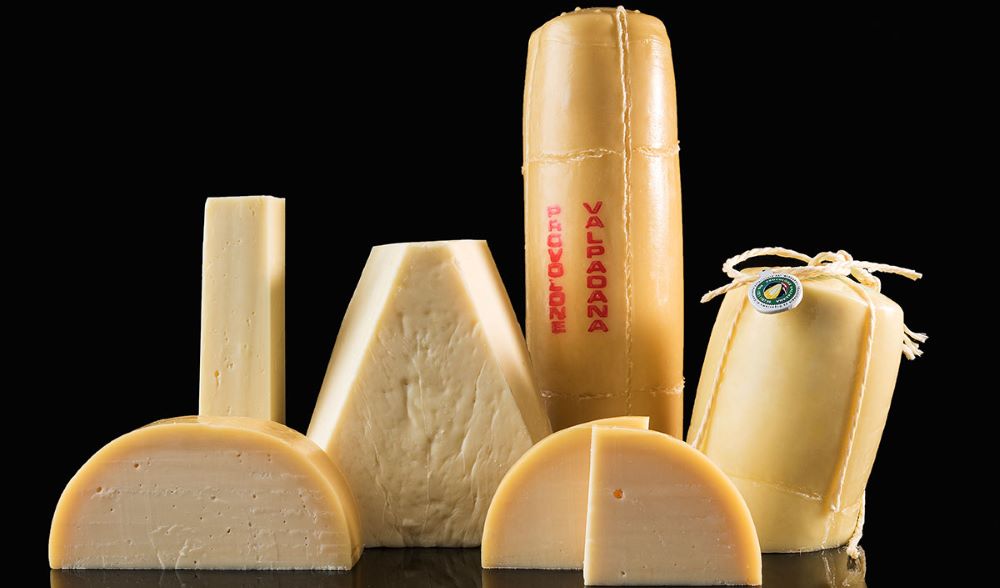
Arriving in the Po Valley after the Unification of Italy, Provolone Valpadana Dop is a stretched-curd cheese with a very distinctive and recognizable shape: salami, pear or melon-shaped, truncated-conical and sometimes flask-shaped. Its basic ingredient is cow’s milk from herds located mainly between Lombardy and Veneto; in Emilia-Romagna it is produced particularly in the Piacenza area.
Once the salting and aging stages are completed, Provolone is ready to be tasted in its two variants, sweet and spicy. How should you pair it? If sweet, you can add it to salads or use it as an ingredient for appetizers; if spicy, on the other hand, it’s perfect in pies, fondues or with curls of fresh butter.
Grana Padano PDO
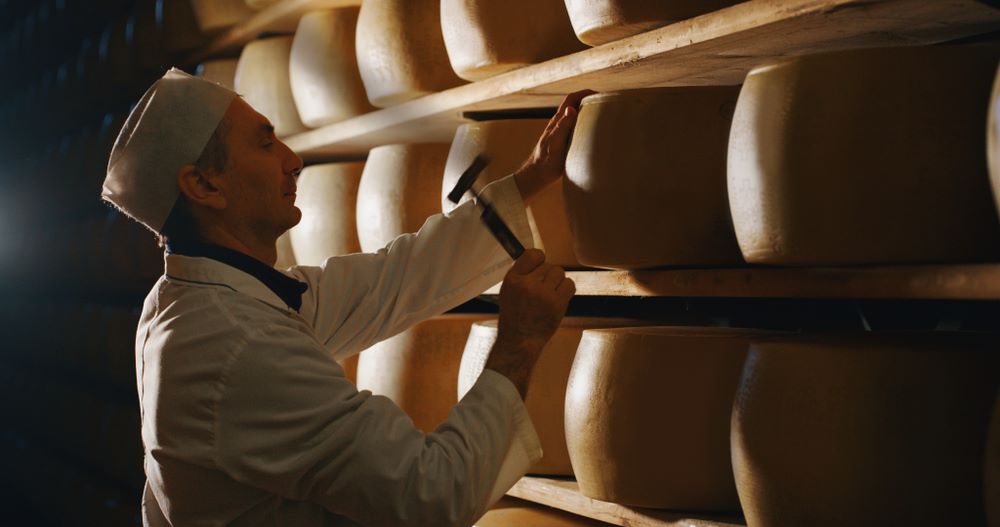
As we shall see for Parmigiano Reggiano, the history of Grana Padano PDO also has its roots in medieval times. In fact, the first mentions of caseus vetus, later renamed grana, date back to the year 1000.
Excellent whether grated over a good traditional pasta dish or in flakes as an ingredient in cold dishes and salads, Grana Padano comes in the classic cylindrical shape with a weight ranging from 24 to 40 kilograms, and the ever-present firebrand mark guaranteeing compliance with the specification. The cow’s milk used in its production comes from various regions; the Emilia-Romagna farms encompass most of its provinces (Bologna to the right of the Reno River, Ferrara, Forlì-Cesena, Piacenza, Ravenna and Rimini).
Once in the moulds, Grana Padano must age for at least 9 months before being put on the market. The result is a cheese with a delicate flavour, which concentrates the nutrients of as much as half a litre of milk in a flake.
Parmigiano-Reggiano DPO
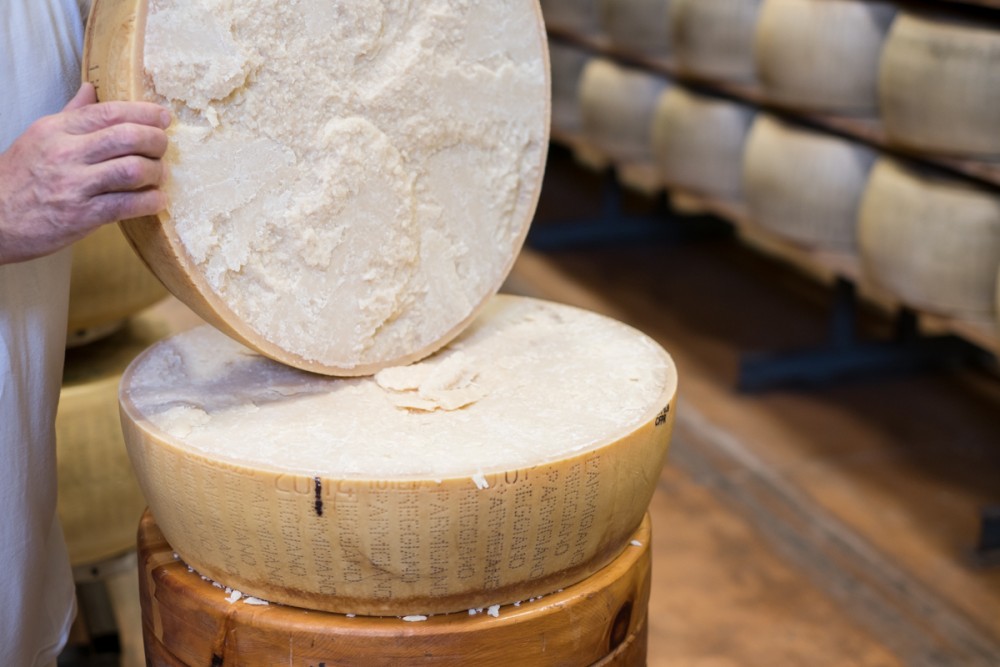
Parmigiano-Reggiano was born in the Middle Ages from a specific need, that of creating a cheese that could be preserved for a long time. Thus the Cistercian and Benedictine monks, relying on salt from Salsomaggiore and milk from their own cows, began producing a large hard cheese.
In addition to being the star of many regional first courses, Parmigiano Reggiano boasts a notable primacy. Among hard cheeses, it is the one that matures the longest. According to the regulations, the maturing process cannot last less than 12 months, and often extends to 36 or 40.
How is Parmigiano produced? First of all, like any other PDO, Parmigiano has a specific breeding and production area, which includes the provinces of Parma, Reggio Emilia, Modena and Bologna to the left of the Reno river, as well as Mantua to the right of the Po river. The milk must be raw and milked twice, in the morning and in the evening, before being mixed with rennet and cooked. Salting takes place after a few days, after which the maturing process takes place; when the cheeses pass the so-called ‘expertisation’ stage – the hammer beating that checks for any defects – the final mark is applied.
Watching the production process, from the addition of the rennet to the branding, is a fascinating experience that can be witnessed every year during the Caseifici Aperti event.
Squacquerone di Romagna PDO

Paired with rocket in the piadina, savoured with honey, jam and caramelised figs, or used as a dressing for pasta. Squacquerone di Romagna is a soft cheese with a sweet and slightly sour taste that lends itself to many flavour combinations.
A true Romagna tradition, squacquerone is made from cow’s milk with the addition of milk enzymes; the very short ripening period (1 to 4 days) gives the cheese its characteristic creaminess. Produced in Ravenna, Forlì-Cesena, Rimini, Bologna and part of the province of Ferrara, unlike the typical cheeses of Emilia-Romagna met so far the history of squacquerone is rather recent and dates back to the 19th century.
Formaggio di Fossa di Sogliano PDO
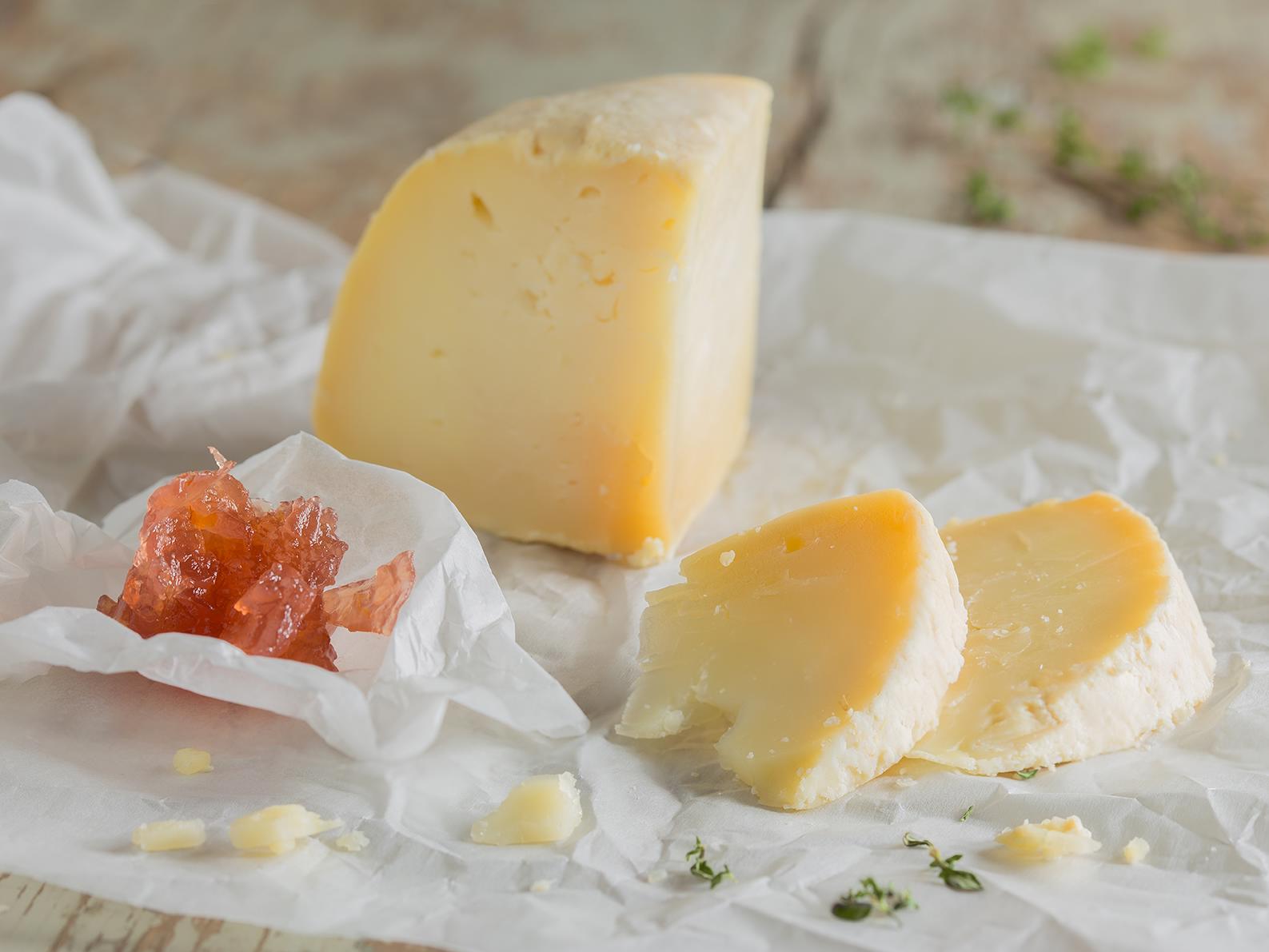
The aging of a cheese is a surprising, at times magical process. This is what happens with Formaggio di Fossa di Sogliano, a typical product from the areas of Forlì-Cesena, Rimini, Ravenna and partly from the province of Bologna (as well as from the Marche region), which spends 80 to 100 days inside pits dug in the sandstone rock before being sold.
While in medieval times the digging responded to the need to preserve the cheese and protect it from theft, today this technique is used to give the product unmistakable aromas and scents reminiscent of the undergrowth. The essential ingredient of Formaggio di Fossa di Sogliano is of course the milk (sheep, cow or mixed milk), which after coagulation is pressed and salted before proceeding to ripening and pitting, usually at the end of August. The moment of sfossatura (opening of pits) then, is a much-awaited event and is traditionally celebrated on 25 November.
As for taste, Fossa cheese can be fine but also intense, depending on the type of milk used for its preparation. It is best enjoyed with honey, fig jam or savor (cooked grape must with fruit); it can also be used in the preparation of first courses and gratins.
Casciotta d'Urbino PDO
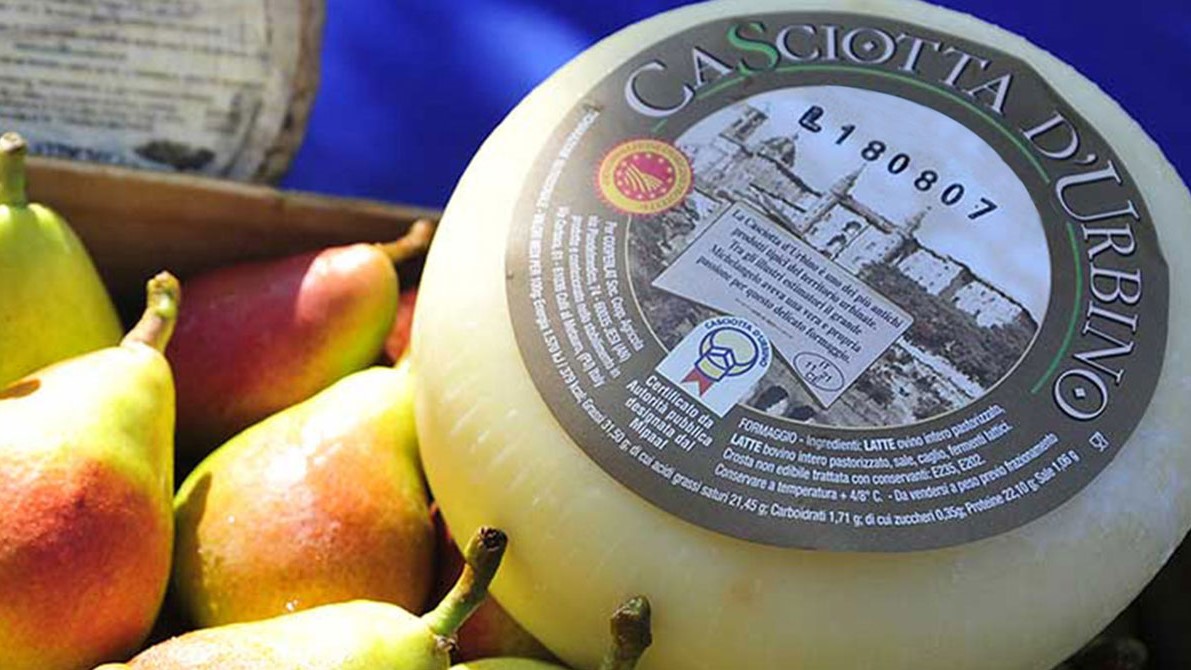
The production area of Casciotta d’Urbino covers the province of Pesaro-Urbino, but some farms are located in the Rimini hills, between San Leo, Novafeltria and Sant’Agata Feltria. A cheese much appreciated by the Dukes of Montefeltro and Della Rovere (and tradition has it also by Michelangelo), casciotta was already being eaten in the 15th century.
Its soft, semi-cooked paste, straw yellow in colour, is a mix of sheep’s milk (70-80%) and cow’s milk (20-30%) matured for between 20 and 30 days, giving the cheese a sweet and delicate flavour, with hints of fresh grass. The food combinations are almost infinite. A few examples? Casciotta goes wonderfully with Urbino’s crescia sfogliata flatbread, with bread and cured meats, as a filling for tortelli but also as a dessert, served with jams.
Raviggiolo
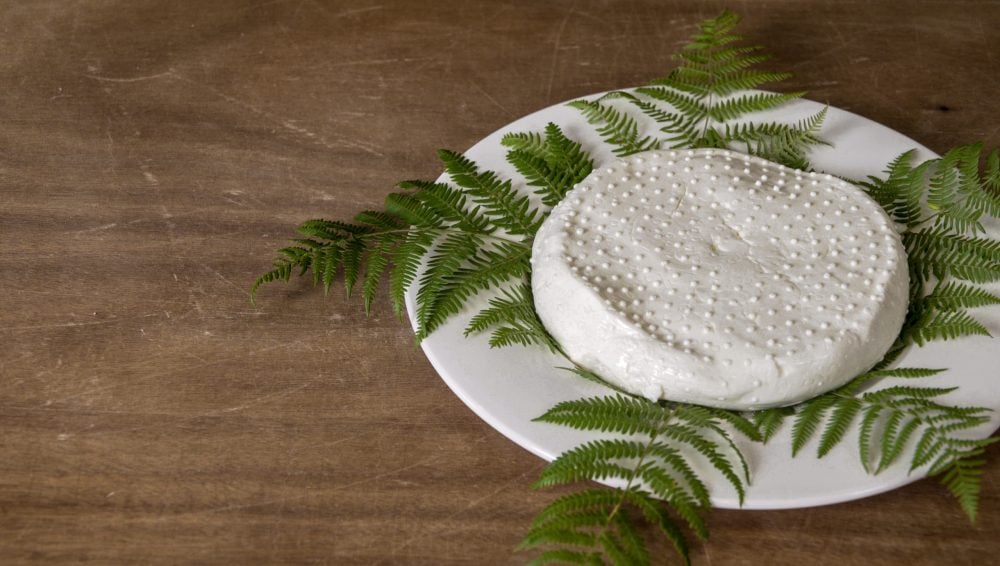
One of the Slow Food presidia of Emilia-Romagna, raviggiolo is a delicacy of the Romagna Apennines, produced between the Upper Marecchia Valley, Montefeltro and the Savio and Tramazzo valleys. Already popular in the 16th century, this cheese made from cow’s milk and rennet, processed as soon as it is milked, is the result of the simple straining of the curd, which is then salted on the surface.
The final product is a round soft cheese, usually wrapped with fern twigs, to be eaten within a few days of preparation. This is why the raviggiolo period usually corresponds with autumn and winter. The main ingredient of Romagna cappelletti, it goes well with honey and jams when eaten fresh.
The pecorino cheeses of Emilia-Romagna
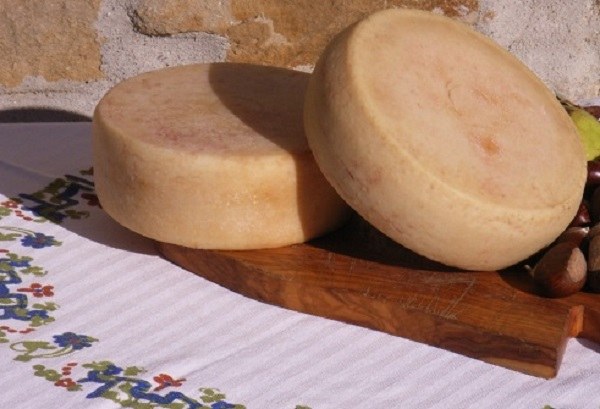
The typical cheeses of Emilia-Romagna include various types of pecorino, traditionally produced in the hilly and Apennine areas of the region. Pecorino of the Reggio-Emilia Apeninnes, for example, bears witness to the spread of sheep farming in the mountains of Reggio Emilia, an ancient practice that dates back to as early as the year one thousand. Fresh or mature, soft or semi-hard, until the 19th century this type of pecorino was even more common than Parmesan.
Moving further south to the hills and foothills of the provinces of Bologna, Forlì-Cesena, Ravenna and Rimini, we can find the so-called Pecorino del pastore (shepherd’s pecorino), one of the most common cheeses on Romagna’s tables. With a mild flavour and semi-hard texture, this pecorino ages from 4 to 8 months and is externally coated with olive oil or tomato paste.
Then there is the cave-ripened Pecorino produced in the Forlì-Cesena area, specifically in Predappio Alta. This corner of Romagna is home to a large sulphur mine, whose caves are exploited for the maturing of excellent cheeses. As is the case for the Formaggio di Fossa di Sogliano DOP cheese, the Predappio pecorino cheese is placed in the caves during summer and then removed in November. Its flavour is strong and slightly spicy, with a bittersweet note provided by the use of vegetable rennet.
Rimini’s Pecorino is also made with natural rennet, i.e. a mix of herbs, fruit, spices and other ingredients that make the cheese particularly digestible, as well as very fragrant. It is often aged for more than a year before being tasted.
The robiola cheese of Piacenza
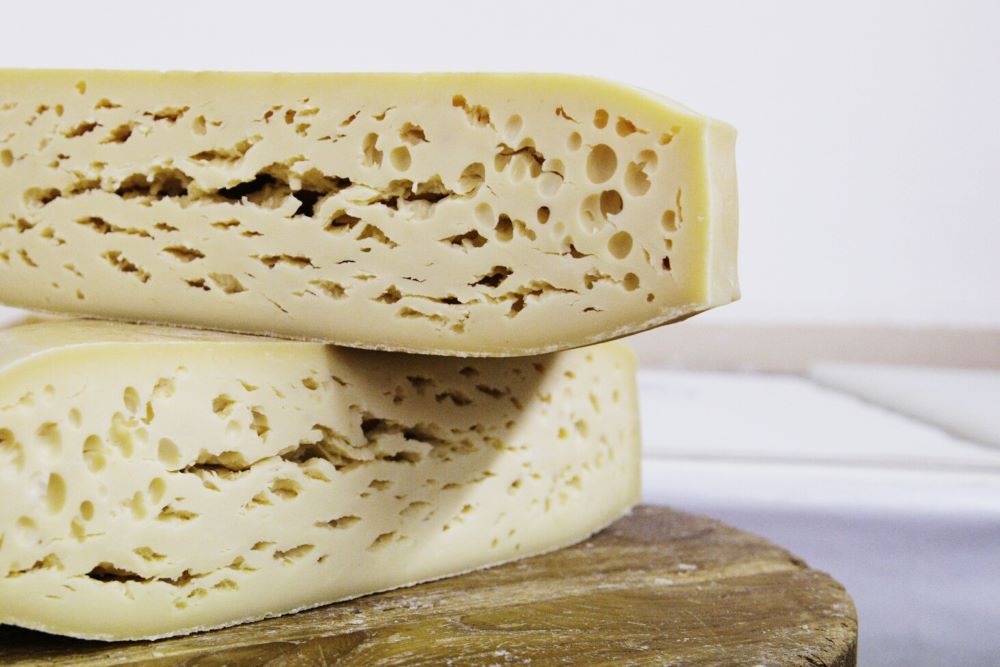
In addition to Provolone della Valpadana Dop, in the Piacenza area you can taste another speciality prepared with cow’s milk. This is Ribiola della Bettola, typical of the Trebbia and Nure Valleys. This semi-hard cheese, known as ribiol, owes its name to King Philip V of Spain, who in the 18th century mentioned it as ‘robiola della bettola‘ (robiola cheese of the greasy spoon).
The Val Tidone area, on the other hand, is the home of Robiola (also known as ribiola or furmai nis), a fresh sheep’s milk cheese whipped with milk, sugar, wine or schnapps/cognac, covered with oil and preserved in glass jars until it acquires a piquant note.
Reggio Emilia’s Fresh Formaggetta
The history of fresh Formaggetta cheese or furmaìn in the province of Reggio Emilia is rooted in the area’s farming traditions. This cow’s milk cheese was produced at home in small wheels (or formaggette, in fact) as far back as the 16th century, perfect for being transported and eaten while working in the countryside. Today, furmaìn is a fresh, fat, semi-hard cheese that goes well with white wines with low alcohol content.
The cheeses of the Rimini area
The Rimini area, and in particular the Montefeltro area, boasts a rich cheese production. These include Caciotta, made with a mixture of cow, sheep and/or goat milk, which in the Montefeltro area matures from two to six months in wooden or terracotta containers covered with walnut leaves, and Caciotta with vegetable rennet, which uses artichoke and thistle flowers for the curd, once called ‘cacia grass’.
Caprino cheese is made from local goat’s milk, a cheese with a savoury and piquant taste, produced in spring and autumn. Cascio pecorino contains only whole sheep’s milk, and matures for 20-30 days; Casecc, finally, is made from cow’s and/or sheep’s milk. Its strong, aromatic flavour comes from the ripening process, which takes place by placing the cheese on walnut leaves for the first eight days and then placing it in terracotta jars.
Author

Maria Grazia Masotti
An eternal dreamer, but I try to stay grounded. I was raised in the countryside but I love big cities. I’m always ready for a trip, as long as it’s sustainable.
You may also like
Caseifici Aperti: alla scoperta del Parmigiano Reggiano DOP
by Elisa Mazzini /// April 1, 2025

Interested in our newsletter?
Every first of the month, an email (in Italian) with selected contents and upcoming events.
